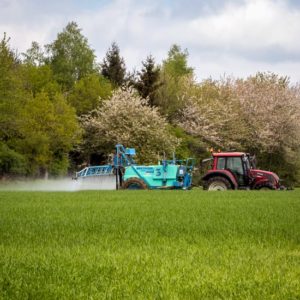We don’t fully know the risks, and that’s part of the problem. Take steps now to limit your children’s exposure.

by Jonathan B. Slater, attorney, Burnett & Williams P.C., Culpeper, Fredericksburg, Charlottesville
When the Environmental Working Group tested dozens of kid-favorite oat-based cereals and snack bars last year (61 samples), we were dismayed to read that nearly all of the food registered positive for a chemical called glyphosate — the active ingredient in Monsanto’s Roundup weed-killer. And in an alarming new round of food testing, published this week, not much seems to have changed — EWG again found glyphosate in all 21 samples of popular breakfast cereals and granola bars.
Glyphosate is a popular weed-killer for crops of genetically modified corn and soybeans, and it is also commonly used as a drying agent on oats just before they are harvested. In 2015, the chemical was labeled “a probable human carcinogen” by the world health organization; in 2017 it was listed as “known to the state of California to cause cancer”; and in 2019 it was found to “increase cancer risk by 41%” by the University of Washington. Most recently it has been at the center of a series of product-liability lawsuits and costly losses for Bayer, who acquired Monsanto in 2018. Juries have sided with plaintiffs — to the tune of more than 2 billion dollars — in a whirlwind of cancer trials in the courtroom.

So how much glyphosate is safe to eat?
This is the rub. One of the biggest hurdles to definitively answering this question is that even though glyphosate has been around for 40 years, there simply have not been many good studies looking into how it persists in the food supply at the consumer level, and what happens when we ingest it. While Bayer maintains that glyphosate is safe and does not cause cancer — the company routinely cites over 800 studies — many questions have been raised about the accuracy and rigorousness of their research.
The Environmental Working Group has determined that the human consumption safety benchmark is 160 ppb, but some scientists think that the EWG’s standards should be even lower, considering that many of these breakfast cereals are consumed by infants and children who have a much lower tolerance to such chemicals. The EPA, in contrast, is on the other end of the spectrum. They say there’s no evidence glyphosate causes cancer and they benchmark tolerance for human consumption at 30,000 ppb, which is nearly 200 times the EWG threshold.
There’s clearly a problem with the enormous discrepancy in the safety benchmarks, but things may be starting to change. Recently the Agency for Toxic Substances and Disease Registry, part of the U.S. Department of Health and Human Services, looked at volumes of research and noted statistical associations between glyphosate exposure and risk of non-Hodgkin’s lymphoma or multiple myeloma, and recommended further study and monitoring of children’s exposure.
What you can do right now.
In the face of uncertainty, we recommend erring on the side of caution. Consider taking steps, especially if you are the parent of small children, to avoid grain products that score poorly, above 160 ppb, on EWG’s testing report, and/or try to buy organic products, which in many cases — but not all — have lower levels of glyphosate contamination. We all can also be more vigilant about the chemicals we use in and around our homes, and maybe — just maybe! — it’s time to make peace with the weeds in our backyards.